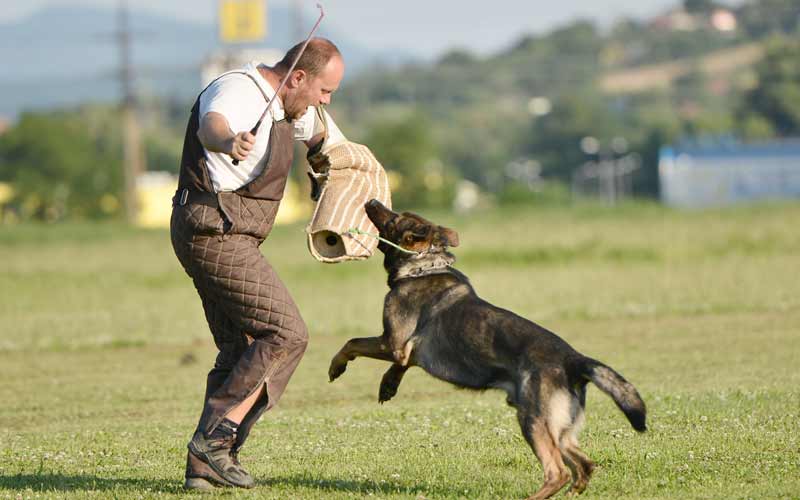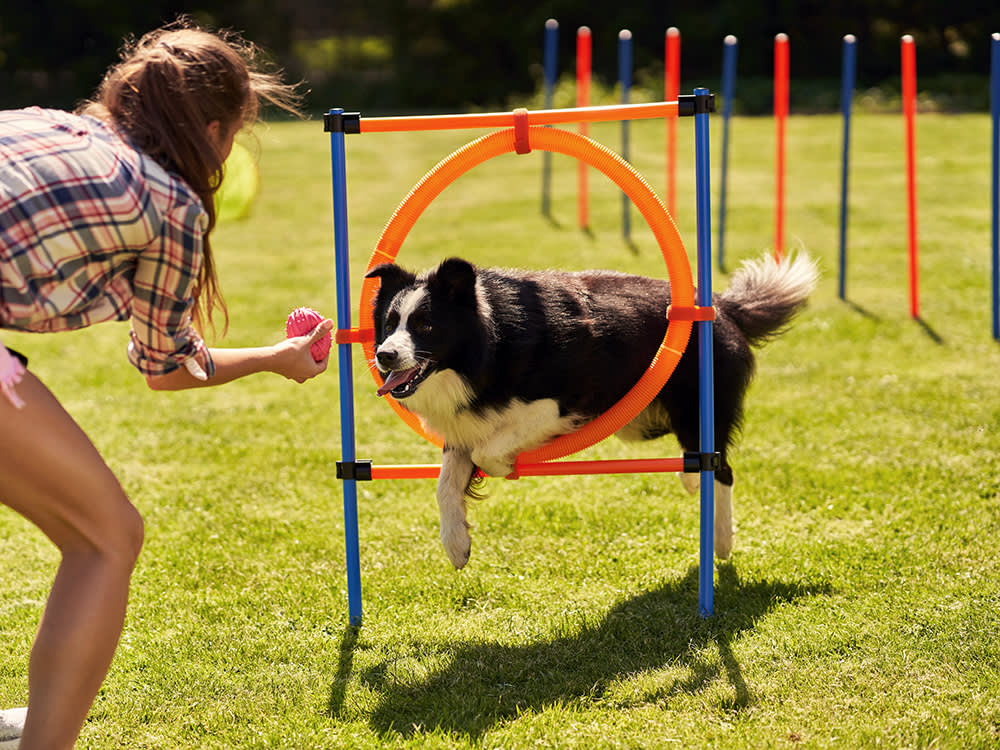Necessary Tips for Effective Dog Training: An Overview for Pet Owners
Efficient canine training is a multifaceted procedure that calls for a calculated technique tailored to both the animal's temperament and the proprietor's purposes. Comprehending exactly how to navigate these obstacles can dramatically boost the training experience, eventually changing the connection between proprietor and canine.
Understanding Canine Habits
Comprehending pet behavior is necessary for reliable training and fostering a harmonious connection in between canines and their owners. dog training. Canines connect largely through body language, vocalizations, and activities, making it crucial for owners to translate these signals precisely.

Socializing plays a substantial duty in canine behavior; exposure to various environments, individuals, and other pets can considerably impact a canine's temperament. Aspects such as type qualities and specific temperament need to lead training techniques, as some breeds might have details behavioral traits that demand customized methods. By understanding these components, owners can produce a helpful atmosphere that encourages favorable behavior, bring about effective training outcomes and a much deeper bond with their animals.
Developing Consistent Commands
Reliable communication with your dog starts with establishing constant commands. This foundational aspect of training is important for fostering understanding between you and your pet. Consistency in the commands you make use of guarantees that your pet dog can accurately connect certain words or expressions with the preferred habits.
When picking commands, pick clear, distinct words that are easy to claim and separate from one an additional. Prevent making use of similar-sounding commands that may confuse your pet dog. As an example, using "rest" and "remain" is ideal, however "rest" and "hit" might lead to misconceptions.
Additionally, preserve the very same tone and quantity for each command. Canines are sensitive to vocal signs, so varying your tone can produce complication.
It is just as vital to ensure that all household participants get on the exact same page regarding the commands used. A united front in command use will avoid mixed signals and enhance the understanding procedure.
Positive Reinforcement Strategies
The power of favorable reinforcement in dog training depends on its ability to urge preferred habits via benefits and praise. This strategy is grounded in the principle that actions complied with by positive outcomes are more probable to be repeated. By including positive support right into your training program, you can efficiently shape your pet's habits in a constructive fashion.
To carry out positive reinforcement, it's vital to determine what motivates your pet dog, whether it be treats, playthings, or verbal appreciation. When your dog does a preferred activity, such as sitting on command, immediately compensate them with a reward or affection. This organization between the command and the favorable result strengthens their understanding.
It's crucial to timing the rewards appropriately; delivering the support within secs of the desired habits helps your pet make the connection (dog training). In addition, consistency is vital-- make certain that all relative utilize the exact same commands and reward systems to stay clear of confusion

Slowly, you can decrease the regularity of treats as your pet dog discovers the habits, transitioning to applaud or periodic rewards. This approach not only cultivates a strong bond in between you and your dog however additionally promotes a favorable understanding environment, making training a satisfying experience for both.
Socialization and Communication
Continually exposing your canine to a variety of atmospheres, individuals, and various other pets is crucial for their social development. Socialization ought to begin early, ideally during the important home window her latest blog of 3 to 14 weeks, when pups are most responsive to new experiences. Older pets can additionally profit from recurring socializing initiatives.
Present your pet dog to various settings, such as parks, pet-friendly stores, and metropolitan areas. This exposure helps them adapt to various stimulations, reducing anxiousness and anxiety responses. Encourage favorable communications with various other pet dogs and people, guaranteeing that these encounters are safe and controlled to cultivate self-confidence.
Utilize organized playdates with well-mannered dogs, as this can improve your canine's social abilities and show them suitable behavior. Obedience courses and training sessions likewise provide superb possibilities for socialization, permitting your pet dog to communicate with others in a monitored atmosphere.
Display your pet dog's body language throughout interactions, as this will certainly aid you assess their comfort level. Progressively boost exposure to even more tough scenarios while making sure that each experience is favorable. A well-socialized pet dog is a lot more most likely to exhibit balanced habits, making them a pleasure to have in any setting.
Dealing With Usual Training Obstacles
Every pet dog proprietor will come across training obstacles at some point, despite their dog's age or socialization level. Determining usual issues such as stubbornness, disturbances, and fearfulness can assist in creating reliable strategies for enhancement.

Disturbances throughout training sessions can thwart emphasis. To battle this, begin training in a silent environment with minimal stimuli. Slowly present disturbances as the dog becomes a lot more proficient in commands. Short, frequent training sessions are also effective in maintaining focus.
Terror can impede a pet dog's discovering procedure. Steady desensitization to the source of fear, paired with positive reinforcement, can help alleviate anxiety. Persistence is vital; never ever require a canine right into a scenario that review creates distress, as this might aggravate the issue.
Ultimately, understanding and resolving these common obstacles with an organized technique will promote a more effective training experience, reinforcing the bond in between pet dog and proprietor while promoting effective learning.
Verdict
In summary, effective canine training counts on a comprehensive understanding of canine behavior, the establishment of constant commands, and the application of positive support techniques. Socialization plays a crucial function in creating well-adjusted pet dogs, while attending to usual training obstacles requires persistence and versatility. By applying these vital approaches, family pet owners can cultivate a strong bond with their dogs and promote preferable habits, ultimately bring about an unified relationship between human beings and their canine companions.
Recognizing pet behavior is crucial for efficient why not find out more training and fostering an unified relationship in between dogs and their owners.Socialization plays a substantial role in pet behavior; exposure to numerous environments, people, and other pets can dramatically influence a pet dog's personality.The power of positive support in pet dog training exists in its capability to encourage preferred habits with rewards and praise. By including favorable reinforcement right into your training regimen, you can successfully shape your pet dog's behavior in a positive way.
In summary, effective dog training relies on a thorough understanding of canine actions, the facility of regular commands, and the application of favorable support methods.